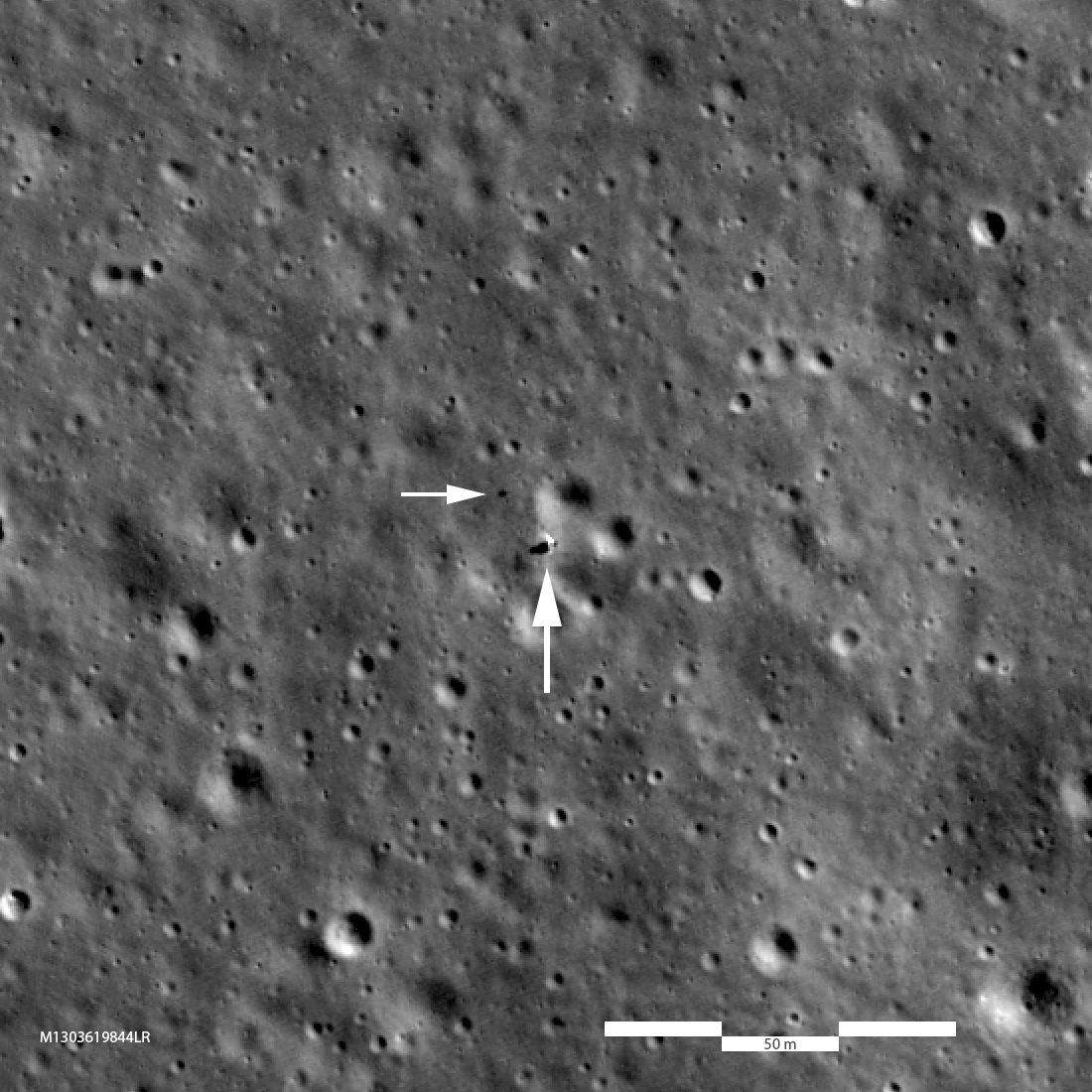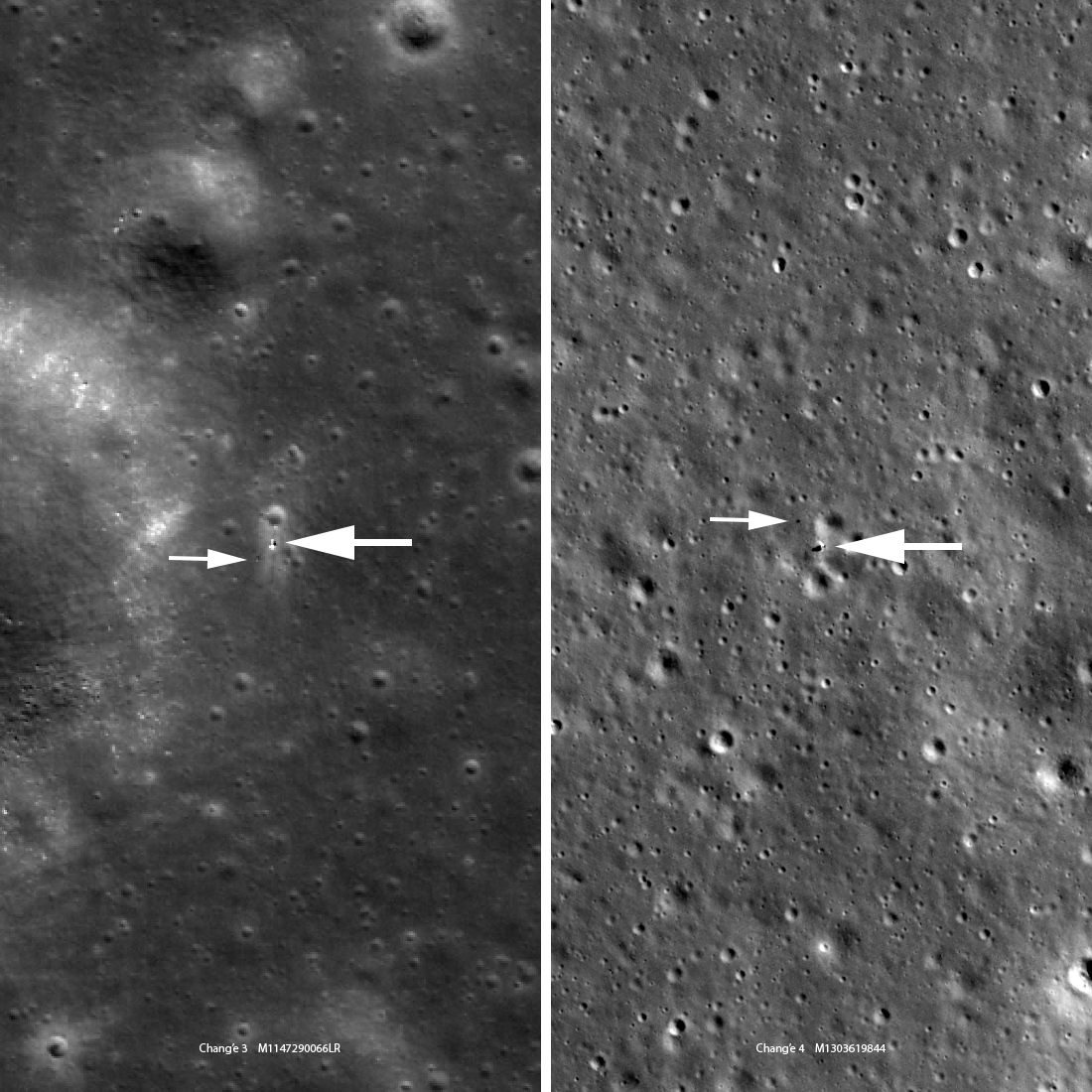
Just after midnight (UTC) on 1 February 2019 LRO passed nearly overhead the Chang'e 4 landing site. From an altitude of 82 kilometers the LROC Narrow Angle Camera pixel scale was 0.85 meters (33 inches), allowing a sharper view of the lander and Yutu-2 rover. At the time the rover was 29 meters northwest of the lander, but the rover has likely moved since the image was acquired. This view has close to the smallest pixel size possible in the current LRO orbit. In the future however, LROC will continue to image the site as the lighting changes and the rover roves!
Chang'e 4, the second Chinese lunar lander, set down on a relatively small farside mare basalt deposit that is extensively mixed with highland ejecta from the nearby and relatively young Finsen crater (73 kilometer diameter, 45 miles). Scientists have long wanted to know the composition of farside basalts; are they significantly different from the nearside basalts? According to CNSA, Chang'e 4 instrumentation includes the visible near infrared spectrometer (VNIS) which takes measurements that can be used to address this question. This new information from the surface will provide important ground truth, while the combination of on-surface and orbital measurements provides synergy that will advance knowledge of the farside.

Explore the fascinating lunar surface around the lander in the full NAC M1303619844LR mosaic.
Related Featured Images
Chang'e 4 Rover Comes Into View
Von Kármán Crater: Awaiting A Visitor
Published by Mark Robinson on 15 February 2019